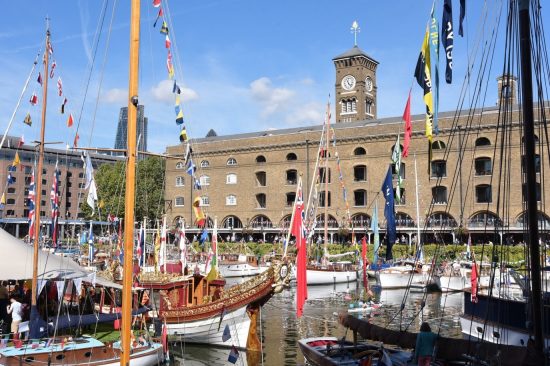
Once a busy dock when London was a port of international shipping importance, St Katherine Dock has been a marina for many years.
Named after a 12th century hospital on whose site it was built, the docks began commercial operations in October 1828. The Thomas Telford-designed dock was once one of the busiest docks in the UK, renowned for handling luxury goods, sugar, rum, spices, perfumes, wines and tea. Although well used, they were never able to accommodate large ships.
German bombing during the Second World War severely damaged their structure after which they never fully recovered their commercial viability.
It was among the first of the London docks to be closed in 1968, and was leased to developers Taylor Woodrow and most of the original warehouses around the western basin were demolished and replaced by modern commercial buildings in the early 1970s, at the same time the marina was established. The development has often been cited as a model example of successful urban redevelopment.
It has functioned as a marina for so long now that in 2015 it needed a refit which has now been completed. Now the refurbished marina is to be managing and operating the Marina on behalf of owners; Blackstone under a 3 year contract.
Following a significant investment, the marina, a stone’s throw from the Tower of London can now accommodate yachts up to 40m and has been brought up to modern standards featuring new pontoons, lighting and utilities. Coupled with its location, a plentiful range of restaurants and a customer service delivered by General Manager Paul Tetlow and his team, St Katharine Docks is now putting London back on the yachting map.
The restoration works were carefully undertaken to ensure no damage was done to the quay walls of the 3 marina basins within the dock.
Considerable care was taken not to disrupt the flora and fauna around the docks – including fish, ducks and other birds. Fish spawning brushes were installed as part of the works to encourage more fish species within the marina.
The entire works programme was completed in a ‘live’ marina, with yachts arriving and departing, with minimal disruption to berth holders and commercial tenants and land-side residents.
